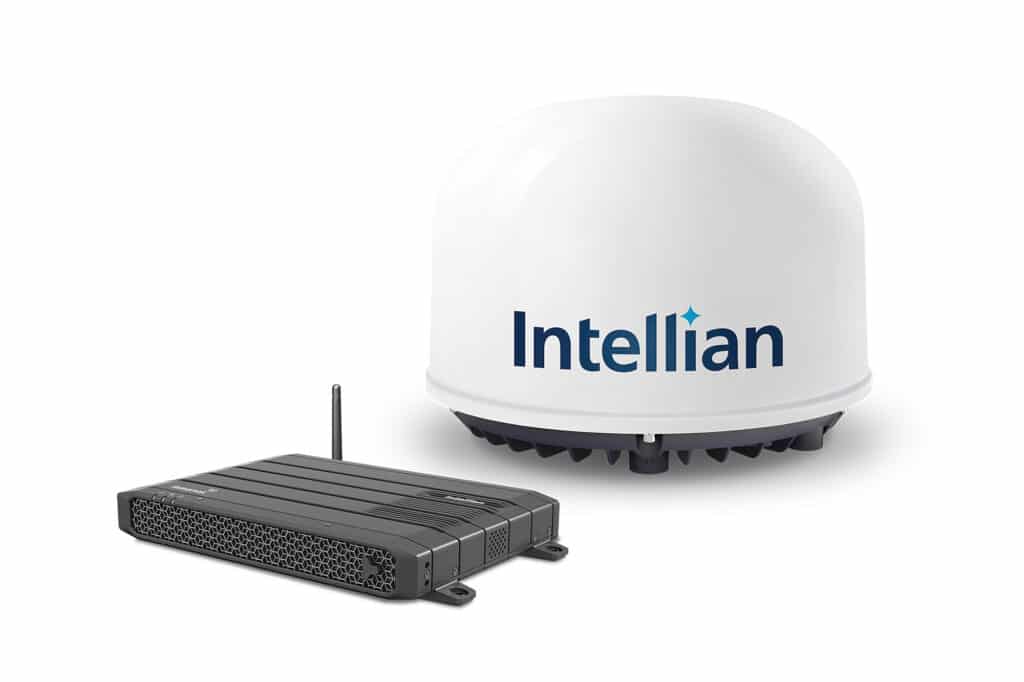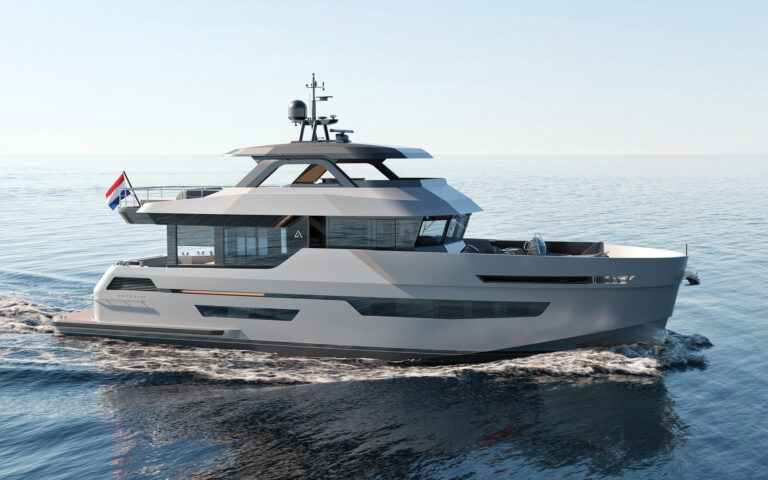
They’re the stuff of dreams, legend, maritime lore: the Northwest Passage, the Drake Passage, Greenland, South Georgia Island, Cape Horn. Cruising these fabled waters requires a capable and prepared yacht, a seasoned and adventurous crew, the right communications and safety tools, and a pinch of luck. In this sense, the ancient Roman philosopher Seneca was right: Luck is what happens when preparation meets opportunity.
Satellite connectivity isn’t new. The first very-small-aperture terminal (VSAT) satcom systems rolled out in the late 1970s, giving mariners the ability to send and receive information at sea. Contemporary VSAT systems typically operate on the Ka-frequency or Ku-frequency bands to offer high-speed performance and bandwidth.
The problem, however, is that VSAT networks typically concentrate their coverage beams on populated areas and commonly cruised waters. Moreover, these systems utilize high frequencies that often suffer from rain and snow fade when the weather sours.
Iridium’s Certus network doesn’t deliver the kinds of data-transfer speeds that enable video or social media streaming, but it does provide global connectivity that isn’t affected by weather. The largest Certus terminals are built with multi-element patched antennas that can simultaneously listen to—and evaluate the signal strength of—multiple satellites for trustworthy connectivity. Certus terminals also can be paired with a VSAT terminal, and long-range cellular and Wi-Fi antennas, to provide out-of-band management and lowest-cost routing. For adventurous cruisers, Certus’ connectivity improves the farther north (or south) from the equator one cruises.
Iridium began work on its Certus network in 2015. Today, the system is composed of 66 cross-linked low-Earth-orbit (LEO) satellites that circle the globe in near-polar orbits that are each roughly perpendicular to the equator. (Imagine the segments of a peeled orange coming together at either end.) At any given time, there are more LEO satellites concentrated at the north and south poles than at the equator. And Iridium’s LEO satellites operate on the L band (1 to 2 GHz), which is a much lower frequency than the Ka and Ku bands, and which isn’t frazzled by rain or snow.
As with all forms of satcom, orbiting Certus-enabled LEO satellites communicate with an onboard terminal. That terminal, in turn, is networked to a wireless router that makes the satcom signal available for all connected devices. While Iridium builds and maintains its LEO constellation, it partners with third-party hardware manufacturers—including Cobham, Intellian, Lars-Thrane and Thales—that build consumer-ready terminals.
While Iridium allows five terminals of different sizes to operate on its Certus network, 700-level terminals—with data-transfer uplink speeds of up to 352 kilobits per second and downlink speeds of up to 704 Kbps—offer Certus’ highest throughput speeds.

For example, Intellian’s C700 terminal is a solid-state device that uses a 12-element patch antenna. “It is then able to track multiple satellites and always select the strongest signal,” says Paul Comyns, Intellian’s senior director channel sales Americas. This setup, he adds, “avoids any issue of blockage, whether that be from onboard obstructions like a sail or mast, or if you happen to be cruising in a fjord where there are big mountains and trees.” Given that the C700 has a 12-element patch antenna, some are still likely seeing satellites even if others are blocked.
The 700-level terminals are monogamous, which means they only transmit and receive data to and from a single satellite at once. However, they’re opportunistic in that they’re often simultaneously auditioning two to four other satellites.
“Because each patch antenna is pointing in a different direction, it has the opportunity to pick up a signal from a different satellite,” Comyns says. “It’s always listening to different satellites and then picking which is the strongest signal and utilizing that one.”
During a 10-minute voice call, a 700-series terminal might change satellites several times. These transitions are nearly seamless to the end user, and the multiple data pathways mean that 700-level terminals on Iridium’s Certus network offer some of the highest reliability levels of any satcom solution.
Certus terminals also can be paired with VSAT systems to deliver an out-of-band management solution for the yacht’s primary satcom system. Additionally, third-party long-range cellular and Wi-Fi antennas can be added for lowest-cost data routing.
This ability to play nicely with others, coupled with Certus’ reliability and global coverage, makes these terminals ideal companions for high-latitude cruisers or for those transiting the South Pacific, where it might otherwise be impossible to download email, GRIB weather files and chart updates, or to transmit and receive emergency communications.
“If you want a reliable connection that’s going to get through whatever the weather, then Certus is a perfect solution,” Comyns says.
As with all technology, Certus service has its pros and cons. As mentioned, speeds aren’t fast enough to stream video or upload it to social media, and Certus is not the least-expensive form of satellite communications (see Iridium’s website for airtime costs). That said, the system is global, there are no moving internal components, and the equipment is relatively small and easy to fit aboard. Factor in Certus’ ability to provide out-of-band management and lowest-cost data routing, and the network presents itself as an intriguing communications solution for anyone who is interested in plying the dark spots on most VSAT coverage maps.
One doesn’t need to be an ancient philosopher to see how adding a Certus system might generate its own kind of luck.









